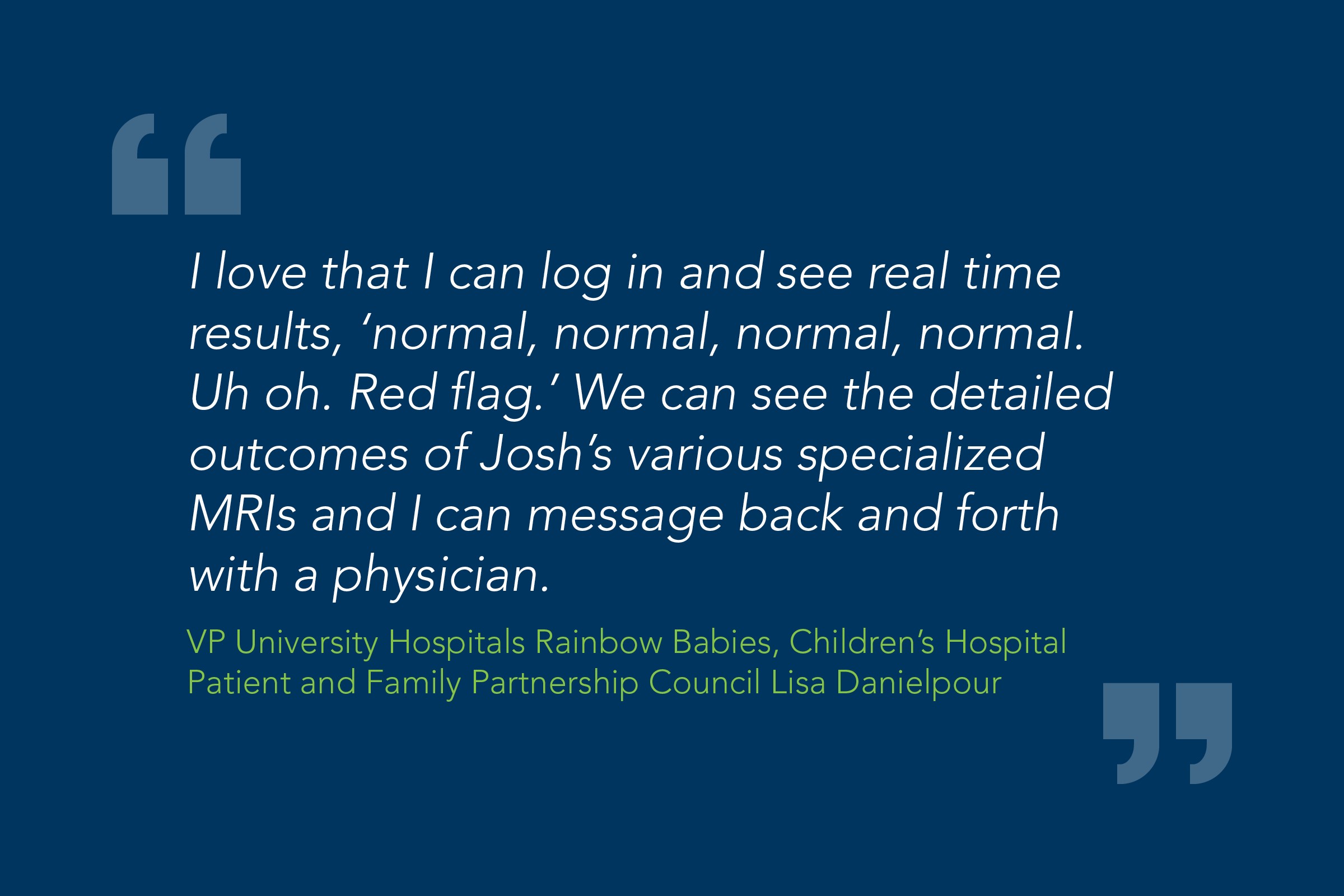Patients consistently express that they want to be engaged in the decisions being made about their treatment plan.
Those who are active participants in their own care or the care of their loved ones ultimately have better outcomes. The question is how do we get each and every patient engaged?

To improve patient engagement, we must listen carefully to patient experiences and learn from each interaction. Here is a story of what patient-centered care means to Lisa Danielpour, mother of two and Vice President of the University Hospitals Rainbow Babies & Children's Hospital Patient and Family Partnership Council.
The start of a healthcare journey
“My son, Josh, had a very active, happy, normal childhood until the age of 13, when he developed symptoms that led to the discovery he had inflammatory bowel disease (IBD),” Danielpour said.
As he got sicker, his disease would not respond to standard treatments. The inflammation in his colon had spread to his entire digestive tract, causing him to remain hospitalized for 7 months.
Discovering complex, rare conditions
The family took a medical flight to Children's Hospital of Philadelphia (CHOP) to seek treatment from its pediatric IBD center. CHOP involved a brilliant National Institutes of Health (NIH) GI/Immunologist who understood the likely rare path of Josh’s disease and recommended a medication.
“Josh responded, but it was a very long recovery,” Danielpour said. Since returning home, NIH and Rainbow Hospital have partnered in Josh’s care which his family is very grateful for. His progress was complicated by other conditions, including liver disease and avascular necrosis in his right hip.
“Thankfully, at least, it was early stage, and his liver counts have normalized. It was overwhelming in the beginning,” Danielpour said.
Managing care across multiple providers and organizations
Because Josh's medical diagnosis is so complex, it’s important that continuous monitoring, care plan adherence and real-time information remain top priorities.
“His specialists have coached my husband and I about the diagnosis. What lab results they look at and what do the results mean? What are the warning signs we should watch for?” Danielpour said.
Danielpour credits the availability of personal health information and the ability to engage with his care team at the appropriate times as invaluable for independently monitoring lab results.
The patient engagement’s role in patient-centered care
Empowering patients and family members by enabling easy to information is the definition of patient engagement. It enhances the patient experience, safety and quality. It gives people with chronic illness or complex medical diagnosis real-time tools that allow them to become active participants in their care journey.

“I love that I can log in and see real time results, "normal, normal, normal, normal. Uh oh. Red flag," Danielpour said. “We can see the detailed outcomes of Josh’s various specialized MRIs and I can message back and forth with a physician.”
For patients seeking care from across multiple hospitals, outpatient services providers and ambulatory care providers, a patient engagement solution such as FollowMyHealth®, built on the Microsoft Azure cloud platform, provides real time access to information across all care providers.
How patient-centered care enhances patient safety
“Providing a collaborative, patient- and family-centered culture that listens to and respects the patient and family voice helps ensure everyone is on the same page and that the care plan is clear,” Danielpour said.
One way the patient engagement solutions support patient safety is by enabling patients an easy way to access their lab and test results. Another way is by enabling secure communication with their providers—so that questions are answered in a timely manner.
The future of patient engagement
The most important themes in fostering patient engagement are communication, inclusion, responsibility, education and satisfaction.
Enabling patients and families to view information real-time and reflect on the agreed upon care plan prevents potential misunderstandings and enables clear communication.
By offering real time lab results, access to care plans, and ongoing education in one place, Josh and his care team get a holistic view of his past and present medical history.
At the end of the day, this is about quality outcomes and keeping patient’s retention and loyalty. Thank you to Lisa for sharing her perspective. You can find more on how FollowMyHealth can achieve patient engagement beyond the portal here.
Editor's Note: This article originally appeared on Allscripts' website.


